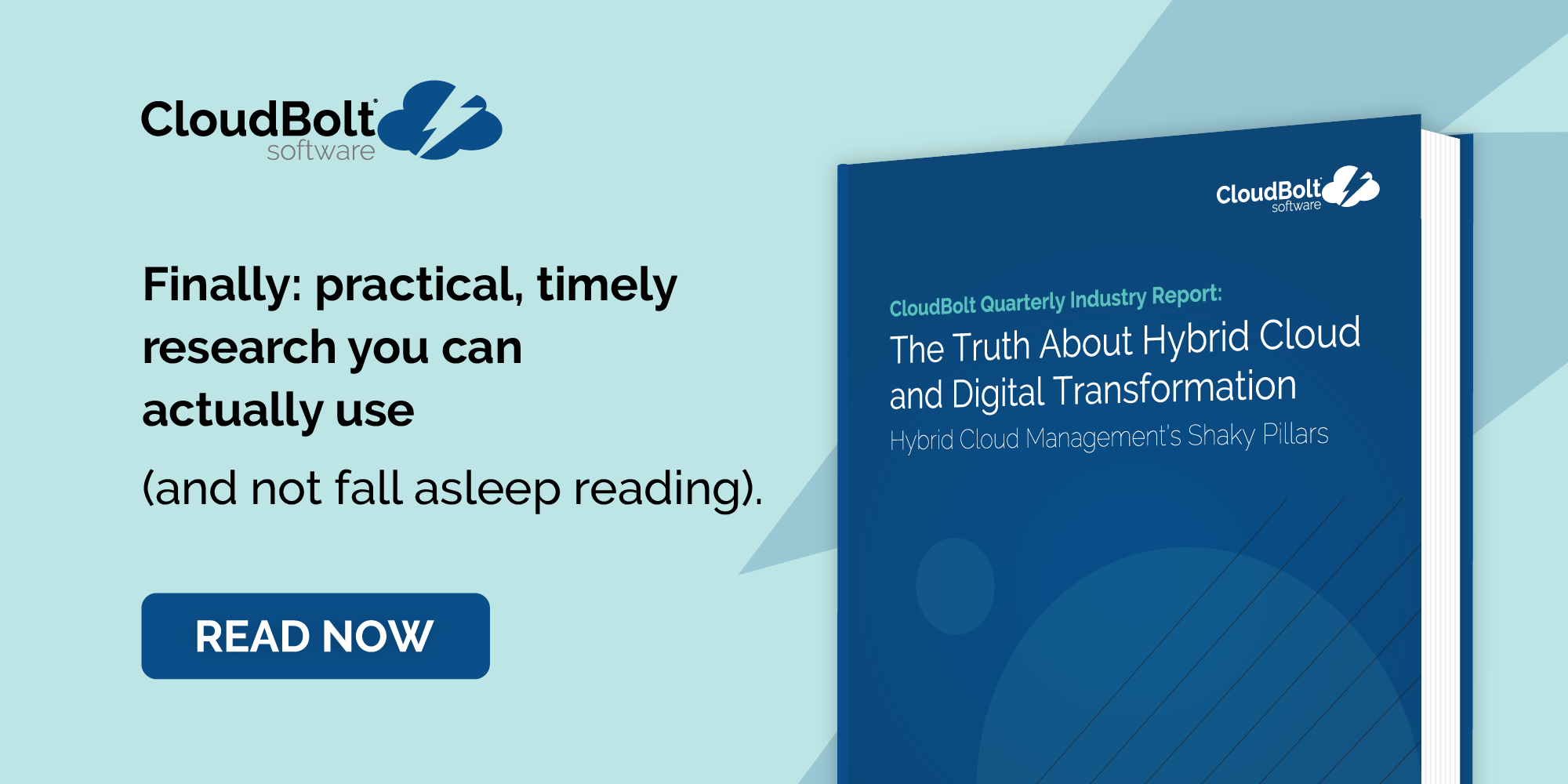New Cloud Order: Clearing the Path to Digital Transformation with the Latest Data

When we were formulating the plan for our inaugural CloudBolt Industry Insights report, we wanted to ensure we were capturing where enterprises are today when it comes to hybrid cloud and digital transformation.
We didn’t want to recycle or rehash old ideas or look at things from a lens perhaps more suitable to a year or even six months ago. You know just as well as we do that the landscape shifts in this world much faster than that. We wanted to provide you, the IT leader, with the timeliest and most relevant information so you can make the best decisions possible.
With that in mind, we’ve seen that the landscape has shifted so drastically in such a short period of time that it has rendered many ingrained assumptions virtually obsolete. Whether due to the global pandemic or the ever-accelerating world in which we live, what worked previously is no longer good enough.
The New Cloud Order Explained
According to our Industry Insights report, 94% of enterprises now agree—a hybrid cloud approach is critical to digital transformation. As the complexity evolves around hybrid cloud, those using first-generation tactics for managing hybrid are finding problems snowball, not weaken.
62% of IT leaders find it difficult to support new cloud environments. Additionally, while 99% believe streamlining integrations are key to accelerating automation and self-service IT initiatives, fully 76% of them are still custom-coding at least a quarter of all their integrations.
And across their clouds, 78% of IT leaders say they have limited insight into who is provisioning what, where to optimize costs or how to remediate security issues.
This just doesn’t cut it anymore. Siloed, myopic approaches in the current landscape are doomed to fail and put your enterprise behind the 8-ball. This is why a new cloud order has emerged.
It’s a reordering of strategic priorities that require comprehensive solutions and improvement in three key areas: automation, optimization and integration. The new cloud order demands simplification of complexities using intelligent, agile, and interdependent approaches to vexing hybrid cloud problems.
To face the new cloud order, organizations have to provide simple and effortless self-service capabilities, optimize cloud costs intelligently, automatically informing and remediating gaps in real-time, and make clear investment in automation tools to integrate systems in a scalable way free of custom code.
In the coming weeks, we’ll use this space to address the new cloud order in each of the three key areas, explore the hard facts regarding the challenges enterprises are facing, and examine how they can be addressed with new, forward-facing solutions.
Discover the way forward in the new cloud order. Read CloudBolt Industry Insights now.
Related Blogs

The Future of Cloud Cost Management and Optimization is Here with CloudBolt
It’s an exciting time to be in the Cloud Cost Management and Optimization space. The landscape is quickly changing as…

